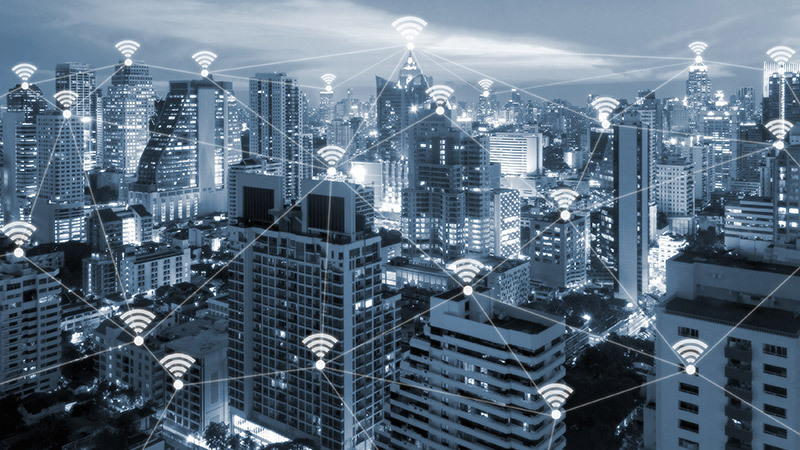News & Blog Posts
Transforming Spaces: The Benefits of Effective Commissioning and Retro-Commissioning
Did you know many buildings operate at just 60% of their intended efficiency? Unlocking the full potential of your building’s systems through commissioning and retro-commissioning could be the key to transforming that statistic. Commissioning and retro-commissioning are vital processes in building management that focus on optimizing system performance and enhancing energy efficiency. It ensures that new systems are installed and functioning as intended, while retro-commissioning revitalizes existing systems, addressing inefficiencies and improving overall building operations. Commissioning is vital for improved comfort, system performance, cost savings, extended equipment lifespan, and long-term sustainability goals. What is Commissioning & Retro-Commissioning? Commissioning is the process of checking that all systems in a newly constructed building, including the building management system (BMS), operate according to design specifications. This phase involves testing, verification, and documentation, to confirm that each component operates efficiently and meets the intended performance goals. In contrast, retro-commissioning focuses on optimizing existing buildings to enhance their performance and efficiency. This process involves assessing current operations, finding the inefficiencies, and implementing adjustments to improve the system’s performance and energy efficiency. By addressing these areas and generating a final report of the findings, retro-commissioning can result in numerous benefits that help building managers maximize the value of their properties. Common Building Automation Issues Addressed: The Benefits: Conclusion In conclusion, unlocking your building’s full potential is not just a goal—it’s a necessity in today’s efficiency-driven environment. By embracing commissioning and retro-commissioning, you can transform your building’s performance, addressing the common issues and optimizing systems to operate

Reducing potential infection at work with iWave
During these unprecedented times, health and safety have been the top priority for businesses and business owners across all industries. Now that the State of Michigan, along with several other states in the country, have started the process of re-opening their economies and lifting their Stay at Home orders, many professionals are returning to the workplace under the guidelines set by their Governors, state officials and the CDC. While social distancing practices and PPE such as masks and gloves are critical components to help prevent the spread of COVID-19 and other harmful infectious diseases, business owners may want to take extra precautions to ensure a safe work environment for all. In this case, Control Solutions, Inc. recommends installing iWave in your facility. What is iWave iWave is an air purifying device that installs in any duct air conditioning system. When air passes over the iWave, ions produced by the device reduce pathogens, allergens, particles, smoke and odors in the air, creating a healthy environment without producing any harmful byproducts. Utilizing patented technology called needle-point bi-polar ionization, iWave creates equal amounts of positive and negative ions. When these ions are injected into the air stream, they break down passing pollutants and gases into harmless compounds like oxygen, carbon dioxide, nitrogen and water vapor. Watch the video below to see a demonstration of how iWave works with mold and smoke. iWave-C for Commercial Buildings iWave comes in many models and makes for different settings—including the iWave-C for commercial and residential buildings. This

Why Choose BACnet IP vs. BACnet MS/TP for Your Facility?
We’ve spent many years on our blog discussing several features and benefits of building automation systems—from top metrics a building management system should be tracking, to troubleshooting common building automation system issues and most recently, how building automation controls can impact accelerated growth strategies for marijuana grow rooms. One question you may still have that we’ve yet to address is, “How does communication happen between my equipment through my building automation system (BAS)?” The answer: building automation and control networks, or BACnet for short. How does BACnet work? BACnet is considered the best-practice communications protocol for building automation and control networks, simplifying BAS equipment and open-data communication, and utilized for networks that leverage the ASHRAE, ANSI and ISO 16484-5 standard protocol. As simplified by KMC Controls, BACnet allows for: While BACnet protocol supports a number of different networks and physical media to connect devices, BACnet IP (Internet Protocol) and BACnet MSTP (Master-Slave/Token Passing) are two of the most common networks. BACnet MS/TP has been the standard for the last several decades, but the introduction of BACnet IP is shaking up the future of the building controls industry. The differences between BACnet IP and BACnet MS/TP What does BACnet MS/TP mean?BACnet MS/TP is a token-passing protocol which uses standard serial ports on microcontrollers and EIQ-485 transceivers. While it offers a slightly lower cost for BACnet Integration, according to Cimetrics, BACnet MS/TP is essentially the dialup of communication in relation to ethernet. Compared to BACnet IP (which we’ll dive into soon), BACnet MS/TP is

Direct Digital Controls In Healthcare Facilities
DDC CONTROLS Earlier this year, we discussed direct digital control technology (DDC) and the important role it plays in facilities. Pairing DDC to work with your building automation system (BAS) poses myriad benefits for facilities across all types of industries, including increased occupant comfort, lower operating costs, faster response times, easier maintenance, and a simpler retro-commissioning process. This upgrade from pneumonic systems is simply more in line with today’s technological capabilities and rapid advancements. While DDC undoubtedly benefits several industries and facilities, this technology when used in healthcare facilities is exceptionally beneficial for many reasons. THE FUNDAMENTALS OF HVAC DIRECT DIGITAL CONTROL Temperature controls in hospitals and labs are crucial to maintaining a safe environment in healthcare facilities. Not only do coolers need to remain at certain temperatures to safely store lab samples and medications, but hospitals must also keep their facilities at certain temperatures and humidity levels to prevent the spread of disease. Plus, these temperature and humidity needs vary depending on the season and climate, according to Rotronic. That means constant adjustments must be made, which is not ideal nor feasible for pneumatic control systems. That’s where DDC comes in. DDC offers the ability for facilities managers to set separate temperatures for hospital hallways, labs, patient rooms, waiting rooms, and more. As reported in a case study by G & R Controls in South Dakota, they were able to help Prairie Lakes Healthcare System of South Dakota and Western Minnesota gain more control over their HVAC system while maximizing
